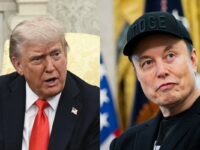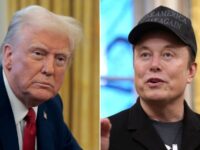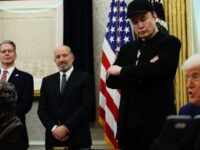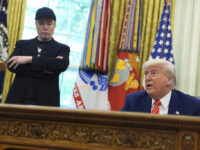Monday’s statement of a short-term decrease in import tariffs is just the current chapter in an almost eight-year trade conflict that started throughout President Donald Trump’s very first term. The arrangement, which followed conversations in between American and Chinese agents in Geneva, was explained by the White House as a presentation of “Trump’s unparalleled expertise in securing deals that benefit the American people.”
President Donald Trump and Chinese President Xi Jinping shake hands throughout a joint declaration to members of the media Great Hall of individuals, Thursday, Nov. 9, 2017, in Beijing, China. U.S. Secretary of the … Andrew Harnik/ Martial Trezzini/AP Photo/ Keystone by means of AP Timeline: How Tariffs on China Have Evolved April, 2017 After positioning heavy focus on trade deficits and China’s function in them throughout the project, Trump consults with President Xi Jinping in Beijing, where the set accept a 100-day prepare for trade discussions. January, 2018 The Trump administration reveals 30-percent tariffs on imported solar batteries and tariffs varying from 20 to 50 percent on particular cleaning devices. Together, the tariffs target over $10 billion worth of imports, according to the Peterson Institute for International Economics. March, 2018 Trump reveals tariffs of 25 percent on worldwide imports of steel and 10 percent on aluminum. April, 2018 Beijing reacts to the tariffs on photovoltaic panels and cleaning makers with tasks on U.S. imports of metals, fruits and red wine. In addition, Beijing reveals antidumping responsibilities of almost 180 percent on U.S. imports of the cereal crop sorghum. The U.S. reacts to the vindictive tariffs with a 25-percent tariff on Chinese items in the aerospace, equipment and medical markets. China once again strikes back with tariffs as much as 25 percent on over 100 U.S. items consisting of airplane and soybeans. June-August 2018 The 2 nations continue to exchange vindictive tariffs throughout the summer season, affecting an approximated $250 billion worth of Chinese products and $110 worth of U.S. imports, according to AP. December, 2018-May, 2019 Trump raises tariffs on $200 billion worth of Chinese imports to 25 percent after a breakdown in settlements in between the 2 countries. January, 2020 The U.S. and China strike a provisionary trade offer, needing China to increase its purchases of U.S. energy and farm services and products by $200 billion. Trump reveals brand-new tariffs on steel and aluminum items, mostly affecting imports from Taiwan, Japan, the European Union, and China. January, 2021 Joe Biden is sworn in and picks to mostly keep the tariffs on Chinese imports carried out under his predecessor. Trade Representative Katherine Tai described the choice in an interview with the Wall Street Journal in March, arguing that “yanking off tariffs” might deal damage to the economy, which the trade steps had actually given the U.S. specific “leverage” in future settlements with Beijing. February, 2022 Biden extends Trump’s 15-percent tariff on imported solar power devices by 4 years, pressing their expiration to 2026. October, 2022 Biden enforces brand-new constraints on the export of semiconductors and chipmaking devices to China, constraints that are broadened throughout the rest of his presidency. February, 2024 During an interview with Fox News, Trump proposes a 60-percent across-the-board tariff on Chinese imports if re-elected, including: “Maybe it’s going to be more than that.”
Might, 2024 Biden considerably increases tariffs on Chinese photovoltaic panels, steel, aluminum, and medical gadgets. September, 2024 The administration completes the tariff walkings revealed in May. From September 27, rates increase to 100 percent for electrical automobiles, 50 percent for solar batteries, and 25 percent on EV batteries, important minerals, steel, aluminum and ship-to-shore cranes. January, 2025 Trump is sworn into workplace, guaranteeing in his inaugural address to “tariff and tax foreign countries to enrich our citizens.”
February, 2025 Trump increases tariffs on all Chinese imports by 10 percent. China strikes back with 10 to 15 percent tariffs on U.S. coal and melted gas items, along with farming devices. Trump likewise reveals a 25-percent tariff on all steel and aluminum items entering into the U.S., which enters impact in mid-March. March, 2025 China’s tasks are raised by an additional 10 percent to a 20 percent standard. Beijing once again reacts with brand-new tariffs on U.S. farming items. In late March, Trump reveals a 25-percent tariff on vehicles and particular automobile parts, the previous entering impact on April 3. April, 2025 On April 2–“Liberation Day”– Trump reveals mutual tariffs on lots of America’s trading partners. China is slapped with a 34-percent mutual tariff, due to what the administration determined as its own 67-percent tariff on U.S. imports. The White House validates that this remains in addition to the other responsibilities on Chinese items. China reacts by revealing a 34-percent tariff on U.S. products, together with export controls on unusual earth minerals, and Trump threatens an extra 50-percent tariff if the nation declines to pull back. Beijing states its intent to “fight till the end,” and Trump enforces the threatened 84-percent tariff, raising China’s overall to 104 percent. China once again strikes back with an 84-percent tariff on U.S. items. Trump instantly fires back by increasing taxes on Chinese imports to 145 percent. Trump reveals a 90-day time out on the brand-new tariffs on April 9, with the exception of China, which raises its tariffs on U.S. imports to 125 percent. The U.S. later announces that mobile phones and computer systems will be exempt from the mutual tariffs, while China likewise silently strolls back tariffs on specific semiconductor and incorporated circuit items. May, 2025 During testament before your house Financial Services Committee on May 6, Treasury Secretary Scott Bessent reveals that he will consult with a Chinese delegation throughout a see to Switzerland. Bessent, together with U.S. Trade Representative Jamieson Greer, meet Vice Premier of individuals’s Republic of China, He Lifeng in Geneva. After 2 days of talks, the 2 nations launch a joint declaration laying out a considerable however short-lived decrease in the tariffs, and verifying their dedication to more trade settlements. What Happens Next? The 90-day decrease in the tariffs will start on May 14. The arrangement will see both nations lower their tariff by 115 percent– leading to a 10 percent rate for U.S. items going into China, and a 30 percent tariff on Chinese imports to the U.S. The 20-percent responsibilities targeted at Beijing for its function in the fentanyl trade stay in location. China has actually likewise consented to “suspend or remove” nontariff countermeasures on the U.S., that includes the export limitations put on unusual earths.
Read More





















0 Comments